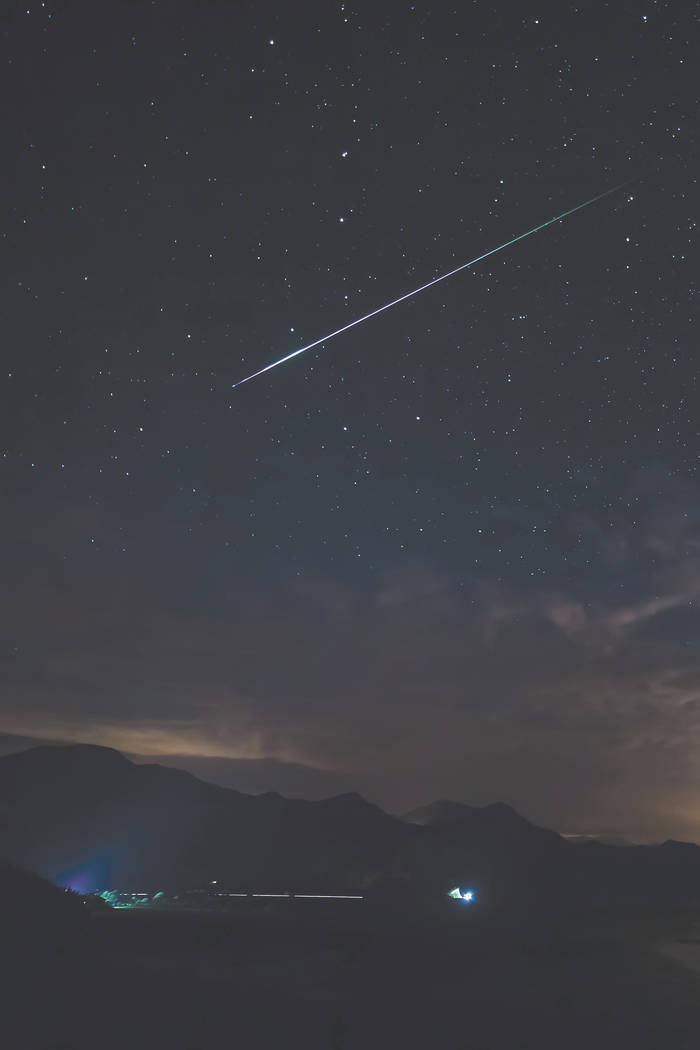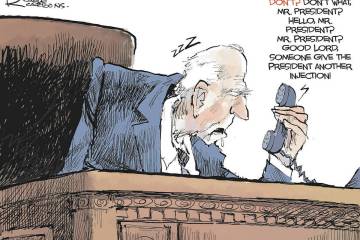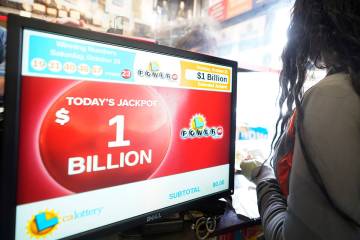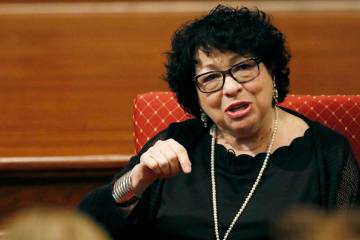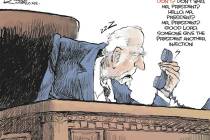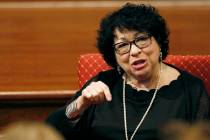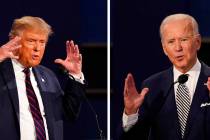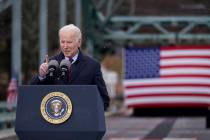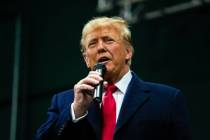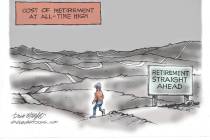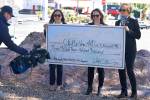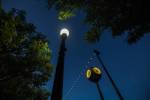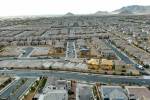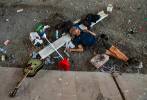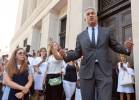COMMENTARY: When we didn’t take the light for granted
The holiday season is a season of lights — so many that NASA says between the day after Thanksgiving and New Year’s Day, U.S. cities glow 20 percent to 50 percent brighter at night than they do the rest of the year. Even in a 24/7 era where we take artificial illumination for granted, lights shining in the darkness give us comfort and joy.
“In him was life, and the life was the light of men,” the Gospel of John declares. “The light shines in the darkness, and the darkness has not overcome it.”
Human beings yearn for light because, through most of human history, night’s darkness was hazardous. “The night is dark and full of terrors” wasn’t just a line from “Game of Thrones.” It was real life. As a reminder of what night was once like, and when and how it changed, I recommend two histories.
In “At Day’s Close: Night in Times Past,” Virginia Tech historian A. Roger Ekirch recaptures the nighttime experience of early modern Europe and colonial America, spanning roughly 1500 to 1750. “Rarely did preindustrial folk pause to ponder the beauty of day’s departure,” he writes.
In contrast to the praises sung of dawn, neither in literature nor in letters and diaries did contemporaries marvel at the sun’s decline. Feelings of insecurity more often than awe swept the terrain. “Begins the night, and warns us home repair,” a Stuart poet wrote. Eager to avoid nightfall, people hastened homeward, hoping to return in “good season.” Some, tarrying too long, lodged at the house of a relation or friend rather than brave the night. Easily, the most common idiom in English for nightfall was “shutting-in.” More than other expressions, it captured popular apprehensions.
Criminal and, many believed, supernatural threats lurked in the darkness, as did physical hazards and the ever-present danger of fire. Stumbling through the country darkness, one might trip over roots or fall into a bog. (George Eliot’s “Silas Marner” of 1868 hinges on a nighttime fall.) In the city, darkness hid open cellars and coal vaults, sewage ditches and low-hanging shop signs.
Yet neither did people feel entirely safe in their homes. In a world with bad lighting and inadequate locks, “what always they feared most was the invasion of their dwellings by burglars,” Ekirch writes.
Yet night also brought liberation, privacy and sociability. “Rather than retire with the sun, most people instead chose to prolong their evenings with like-minded souls of good cheer, whether families, friends, or lovers,” Ekirch writes. Whether engaging in religious meditation, pursuing their favorite vices or expressing intimate thoughts to their spouses, preindustrial people often found that darkness permitted their authentic selves to emerge from social masks.
By the late 18th century, night’s extreme darkness began to lighten, at least in urban areas, as theaters, arcades and shops brought crowds out after sunset. With the coming of gas lighting along streets and within buildings, night became even friendlier to commerce and conviviality. “There is nothing so important to the British realm, since that of navigation,” the London Times declared of street lighting in 1807.
“In the Watches of the Night: Life in the Nocturnal City, 1820-1930” by University of Connecticut historian Peter C. Baldwin charts the transformation artificial lighting wrought on American urban life. “Night was known by long tradition in Western society to be a time of crime, immorality and sickness,” Baldwin notes. The early days of artificial lighting weren’t much different, as gangs of drunk and disorderly young men ruled the nighttime streets.
Although light alone couldn’t make nighttime safe, city dwellers believed it did. That encouraged more people to venture out at night, which in turn did make streets safer. After gas lights went up along Broadway in 1827, for instance, evening promenades became a New York ritual. Meanwhile, modern police forces grew alongside street lighting, driven by similar demands to protect evening shoppers and workers.
“As cops and gas lamps spread nearly simultaneously through the commercial districts, and more haltingly through residential neighborhoods,” Baldwin observes, “they were understood to be mutually reinforcing ways to conquer territory from urban barbarians.”
The transformation of the illuminated night into an extension of daytime took decades, however. “From the 1820s until after the turn of the century, the partial illumination of the city provided enough light to get around, but not so much as to lift ‘the cover of darkness’ from those who sought concealment,” Baldwin writes.
Further, the growing number of legitimate activities at night provided a useful camouflage for everything else that went on. Was that shadowy figure innocently on his way to a prayer meeting or a job on the night shift? Was he sneaking off for a night of debauchery and crime? Or, more disturbingly, was he trying to make up his mind as he walked along?
As they make their way from one well-lighted place to another, today’s holiday shoppers wouldn’t think to ask such questions. Like their ancestors before them, however, they are still drawn to the light.
To fully appreciate its blessings, it’s worth remembering what life was like when night was black and light was scarce.
Virginia Postrel is a Bloomberg View columnist. She was the editor of Reason magazine and a columnist for the Wall Street Journal, the Atlantic, the New York Times and Forbes.



